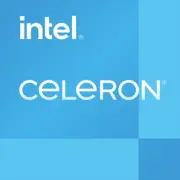Intel Celeron G1610T

Intel Celeron G1610T Processor: A Budget Workhorse for Niche Tasks
Relevant as of April 2025
Key Specifications: Architecture and Performance
The Intel Celeron G1610T, released in 2013, remains in demand within the budget solutions segment. Its Ivy Bridge architecture (3rd generation Core) and 22nm manufacturing process provide a balance between energy efficiency and basic performance.
Key Parameters:
- Cores/Threads: 2/2 (no Hyper-Threading support).
- Base Frequency: 2.3 GHz (no Turbo Boost).
- L3 Cache: 2 MB.
- TDP: 35 W (low thermal design power).
- Graphics: Intel HD (based on Ivy Bridge, 650 MHz).
Performance:
According to Geekbench 6 (2025), the processor shows:
- Single-Core Test: 393 points.
- Multi-Core Test: 674 points.
These scores are comparable to modern ARM processors in budget tablets, but for desktop tasks, it is suitable for basic use: office applications, browsing, light multitasking.
Features:
- Support for SSE4.1/4.2 instructions, AES-NI.
- Integrated graphics for output to 2-3 monitors.
Compatible Motherboards
The processor uses the outdated LGA 1155 socket, which limits motherboard options.
Relevant Chipsets (2025):
1. H61: Budget option with SATA II and USB 2.0 support. Example: ASUS P8H61-M LX3 (price: $45-$60 in new condition).
2. B75: Enhanced features — SATA III, USB 3.0. Example: Gigabyte GA-B75M-D3H ($60-$80).
3. H77: Supports RAID and Smart Response Technology.
Selection Tips:
- Due to the age of the boards, new ones are rare. Most available options are refurbished or leftover from old batches.
- Check for updated BIOS firmware for compatibility with the Celeron G1610T.
Supported Memory
The processor works only with DDR3:
- Types: DDR3-1333/1600 MHz.
- Maximum Capacity: 32 GB (theoretically, but H61/B75 boards rarely support more than 16 GB).
Recommendations:
- Use dual-channel kits (2×4 GB or 2×8 GB) to enhance integrated graphics performance.
- Avoid high-frequency memory (above 1600 MHz) — the processor does not support overclocking.
Power Supply Units: Minimalism in Energy Consumption
The Celeron G1610T is one of the most energy-efficient desktop CPUs.
Power Calculation:
- The processor itself: 35 W.
- Motherboard + memory: ~20 W.
- HDD/SSD: 5-10 W.
- Discrete graphics card (optional): depends on model (e.g., GT 1030 — 30 W).
Recommended PSUs:
- Without discrete graphics: 300 W (e.g., be quiet! SFX Power 3, $40).
- With entry-level GPU: 400-450 W (Corsair CX450, $55).
Important: Don’t skimp on the power supply — even for such a system. Cheap PSUs can fail and damage components.
Pros and Cons of Celeron G1610T
Pros:
1. Energy Efficiency: Ideal for PCs running 24/7 (e.g., media servers).
2. Low Price: New processors (in rare stores) — $25–$35.
3. Quiet Operation: Passive cooling is sufficient with a good case.
4. Compatibility with Windows 10/11: Drivers are updated until 2025.
Cons:
1. Weak Performance: Struggles with modern browsers when handling 10+ tabs.
2. Outdated Platform: No support for NVMe, USB 3.1, DDR4.
3. No Upgrade Path: LGA 1155 socket is incompatible with new CPUs.
Use Cases
1. Office Tasks
- Example: Working with documents (Word, Excel), video calls via Zoom.
- Limitations: Applications like Photoshop or 4K video will lag.
2. Media Center
- Example: Viewing Full HD video (integrated graphics decode H.264), streaming through Plex.
- Note: 4K and H.265 require an external graphics card (e.g., NVIDIA GTX 1650).
3. Retro Gaming
- 2000s Games: Half-Life 2, Counter-Strike 1.6 — on integrated graphics.
- Modern Games: Only through cloud services (GeForce Now).
Comparison with Competitors
AMD Athlon 200GE (2018)
- Pros: Newer architecture (14nm), supports DDR4, Vega 3 graphics.
- Cons: Higher price ($50–$60), TDP 35 W.
- Summary: Athlon is preferable for upgrades but requires an AM4 platform.
Intel Pentium Gold G6400 (2020)
- Pros: 2 cores/4 threads, DDR4-2666, UHD 610.
- Cons: Price ($75), requires LGA 1200 motherboard.
- Summary: Better performance but more expensive to build.
Practical Assembly Tips
1. Case: Choose compact models (e.g., Fractal Design Core 500) for a media server.
2. Storage: Include an SSD (Kingston A400 240 GB, $25) — speeds up system performance.
3. Cooling: A stock cooler or passive solution (Noctua NH-P1, $80) is sufficient.
4. Networking: Add a PCIe card with Wi-Fi 5 (TP-Link Archer TX50E, $30) if the motherboard lacks a wireless module.
Final Conclusion: Who is the Celeron G1610T for?
This processor is a choice for:
- Minimalism Enthusiasts: Building a PC for $150–$200 for basic tasks.
- Owners of Old Systems: Upgrading a PC from the 2010s without replacing the motherboard.
- IT Infrastructure: Terminals, kiosks, simple monitoring servers.
Why is it still relevant in 2025?
Low price, availability of components, and energy efficiency make it a niche but practical solution. However, for modern tasks (gaming, video editing, AI), more recent platforms should be considered.
Note: Prices are for new devices available at retail as of April 2025.
Basic
CPU Specifications
Memory Specifications
GPU Specifications
Miscellaneous
Benchmarks
Compared to Other CPU
Share in social media
Or Link To Us
<a href="https://cputronic.com/index.php/cpu/intel-celeron-g1610t" target="_blank">Intel Celeron G1610T</a>